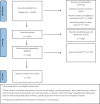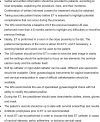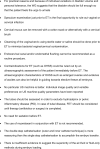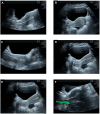Evidence and consensus on technical aspects of embryo transfer
- PMID: 36196080
- PMCID: PMC9522404
- DOI: 10.1093/hropen/hoac038
Evidence and consensus on technical aspects of embryo transfer
Abstract
Background: Ultrasound-guided embryo transfer (US-GET) is a widely performed procedure, but standards for the best practice are not available.
Objective and rationale: This document aims to provide an overview of technical aspects of US-GET after considering the published data and including the preparation for the embryo transfer (ET) procedure, the actual procedure, the post-procedure care, associated pathologies, complications and risks, quality assurance and practitioners' performance.
Search methods: A literature search for evidence on key aspects of the ET procedure was carried out from database inception to November 2021. Selected papers (n = 359) relevant to the topic were analysed by the authors. The following key points were considered in the papers: whether ultrasound (US) practice standards were explained, to what extent the ET technique was described and whether complications or incidents and how to prevent such events were reported. In the end, 89 papers could be used to support the recommendations in this document, which focused on transabdominal US-GET.
Outcomes: The relevant papers found in the literature search were included in the current document and described according to the topic in three main sections: requirements and preparations prior to ET, the ET procedure and training and competence for ET. Recommendations are provided on preparations prior to ET, equipment and materials, ET technique, possible risks and complications, training and competence. Specific aspects of the laboratory procedures are covered, in particular the different loading techniques and their potential impact on the final outcomes. Potential future developments and research priorities regarding the ET technique are also outlined.
Limitations reasons for caution: Many topics were not covered in the literature review and some recommendations were based on expert opinions and are not necessarily evidence based.
Wider implications: ET is the last procedural step in an ART treatment and is a crucial step towards achieving a pregnancy and live birth. The current paper set out to bring together the recent developments considering all aspects of ET, especially emphasizing US quality imaging. There are still many questions needing answers, and these can be subject of future research.
Study funding/competing interests: No funding. A.D.A. has received royalties from CRC Press and personal honorarium from Cook, Ferring and Cooper Surgical. The other co-authors have no conflicts of interest to declare that are relevant to the content of this article.
Keywords: ART; IVF; embryo transfer; good practice; pregnancy; recommendations; ultrasound.
© The Author(s) 2022. Published by Oxford University Press on behalf of European Society of Human Reproduction and Embryology.
Figures









References
-
- Abdelmassih VG, Neme RM, Dozortsev D, Abdelmassih S, Diamond MP, Abdelmassih R.. Location of the embryo-transfer catheter guide before the internal uterine os improves the outcome of in vitro fertilization. Fertil Steril 2007;88:499–503. - PubMed
-
- Abou-Setta AM. Effect of passive uterine straightening during embryo transfer: a systematic review and meta-analysis. Acta Obstet Gynecol Scand 2007;86:516–522. - PubMed
-
- Abou-Setta AM, Mansour RT, Al-Inany HG, Aboulghar MM, Aboulghar MA, Serour GI.. Among women undergoing embryo transfer, is the probability of pregnancy and live birth improved with ultrasound guidance over clinical touch alone? A systemic review and meta-analysis of prospective randomized trials. Fertil Steril 2007;88:333–341. - PubMed
-
- Ali CR, Khashan AS, Horne G, Fitzgerald CT, Nardo LG.. Implantation, clinical pregnancy and miscarriage rates after introduction of ultrasound-guided embryo transfer. Reprod Biomed Online 2008;17:88–93. - PubMed
Publication types
LinkOut - more resources
Full Text Sources
